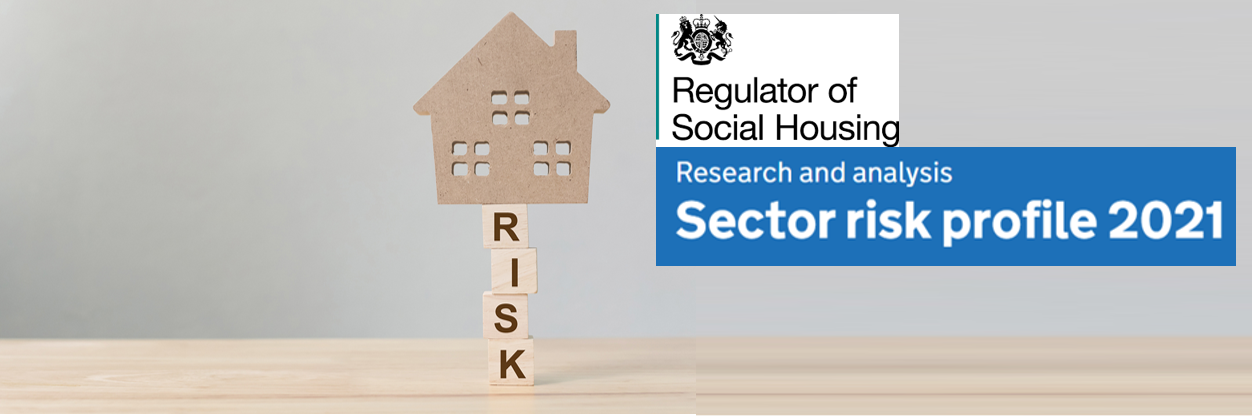
The Regulator of Social Housing has published the main risks facing the social housing sector and some of the actions registered providers should be taking to manage those risks.
Whilst the focus is on larger Housing Associations, almshouse charities, especially those that are Registered Providers, should find the information below useful as a starting point for discussion.
It sets out the Regulators view of the most significant sources of risk to providers’ ongoing compliance with their regulatory standards. The Regulator acknowledges that the focus over the past year was inevitably dedicated to the COVID-19 pandemic and that providers responded well to the unprecedented challenges they face.
Risks are grouped into four sections:
- Strategic risks
- Operational risks – existing stock and service delivery
- Operational risks – development
- Financial and treasury management risks
These risks have the potential to threaten the successful delivery of providers’ strategic objectives, providers’ viability, or the safety of resident. The Sector Risk Profile describes both risks that most providers are likely to face and also those that may only affect a minority of providers.
These risks are further broken down below:
A. Strategic Risks
- Diversification. This is where an Almshouse Charity may have additional revenue streams, such as non-almshouse housing or seek to establish new ones. Almshouse charities must have regard to charity law and their Governing Document when undertaking diverse activity. In addition failure to appropriately manage these can damage an almshouse charities reputation and be detrimental financially, putting the almshouse housing at risk.
- Access to labour and skills. Ongoing skills shortages, made worse by current disruption to the labour market, may threaten the ability to deliver routine and emergency maintenance. Boards will need to ensure that they have robust systems to manage risks from emerging and longer-term labour and skills shortages
- Delivering against expectations. Almshouses, because of their charitable status, could well be scrutinised by a number of stakeholders. Instances of poor quality and performance may reach the public domain quickly.
- Counterparty risk. Almshouses enter into contracts with a wide range of third parties, including insurers and maintenance contractors. Whilst this is an effective way to deliver a service it does increase the third party risk
- Value for Money. The Almshouse Association has produced a webinar on this topic https://www.almshouses.org/training-seminars/ .
B. Operational risks – existing stock and service delivery
- Existing stock quality. Failure to ensure quality almshouse provision, will affect the resident and could lead to deterioration of stock, potentially leading to greater expense at a later date. Boards must ensure that their organisations provide a repairs and maintenance service to homes and communal areas that represents value for money and which ensures residents homes meet minimum standard
- Delivering services to residents. The provision of good quality housing services to residents is core of the role of a registered provider. As well as breaching consumer standards, failure to deliver these services or to engage effectively with residents could lead to a breakdown in trust in the relationship almshouses have with their beneficiaries
- Health and Safety. Ensuring that tenants are safe in their homes is a fundamental responsibility of all landlords. Providers must ensure that they comply with statutory health and safety obligations
- Costs and inflation. Providers’ costs are expected to rise over the next few years, in part due to spending previously delayed by COVID-19 restrictions alongside planned remedial safety works and energy efficiency improvements to existing stock.
- WMC income and arrears. WMC income accounts for the large majority of the sectors income. Frequently the WMC is supported by government benefits such as Housing Benefit or the housing element of Universal Credit. Changes to benefits policy and the administration of benefits can have implications for providers’ WMC collection. The potential for high CPI inflation in the 12 months to September 2021 may represent a significant increase in providers’ maximum permitted rent inflation for 2022/23, and Boards will need to consider a wide range of factors in reaching decisions on rent increases charged to tenants.
- Data Security. Almshouses gather many types of data and need to ensure they protect this data against a backdrop of increasing data security risks.
C. Operational Risks – Development
- Construction process risks. Ongoing disruption to supply chains and labour markets and increased input costs may risk delays to developments.
D. Finance and treasury management
- Existing Debt. Failure to manage relationships with lenders or compliance with covenants can threaten financial viability and undermine the achievement of strategic objectives. Boards must ensure appropriate treasury management and governance processes are in place to effectively monitor existing loan covenants to mitigate the risk of breaches.
- New debt. Strategic purposes, objectives and risk appetites differ, and therefore suitable funding options also vary. Almshouse charities should seek specialist external advice as appropriate, and that Boards are able to effectively understand and challenge this.
- Fraud. Almshouses are exposed to the risk of fraud through their procurement and provision of services. Where fraud occurs, it is reputationally damaging and can have significant implications for providers’ financial viability. Boards must ensure that they have robust internal control procedures in place.
More detailed information can be found here Sector risk profile 2021 – GOV.UK (www.gov.uk)
Posted 17 November 21